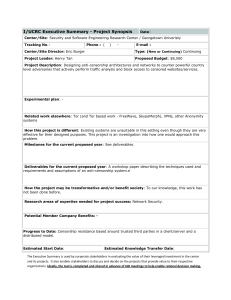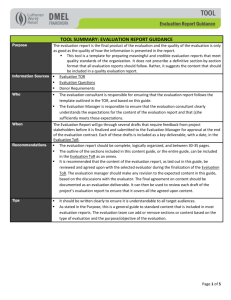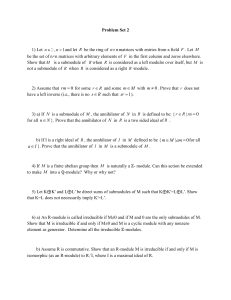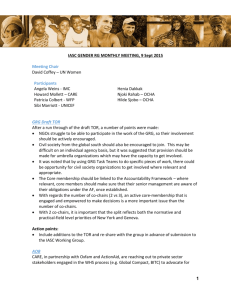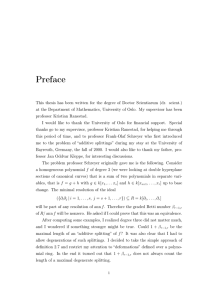solutions for HW#4
advertisement
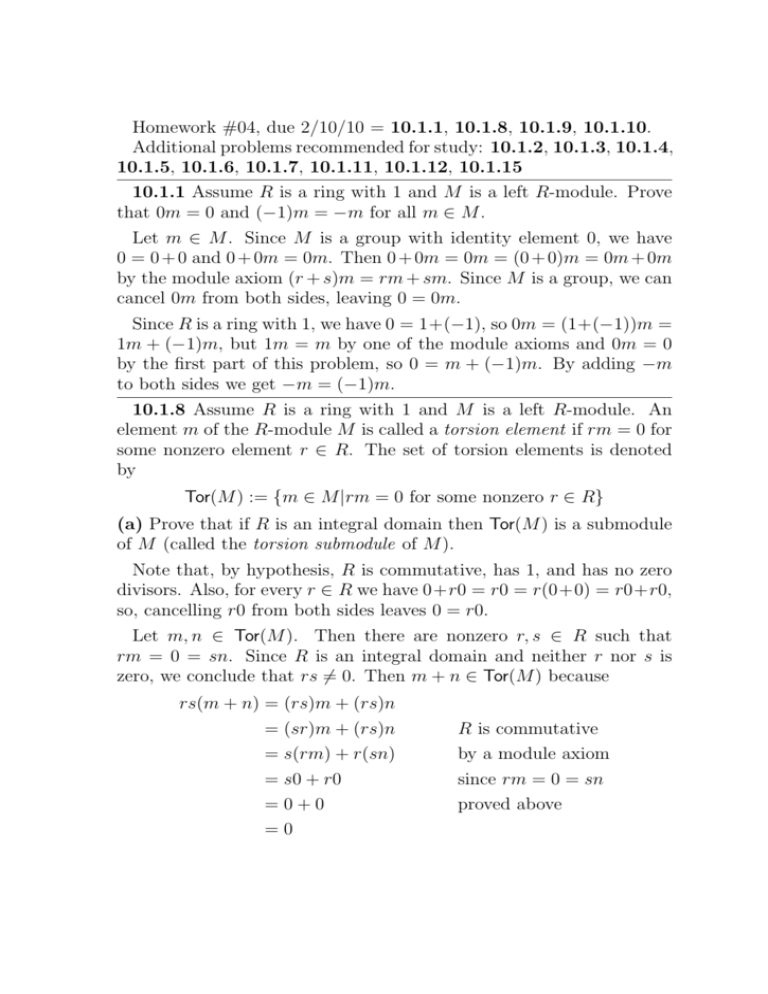
Homework #04, due 2/10/10 = 10.1.1, 10.1.8, 10.1.9, 10.1.10.
Additional problems recommended for study: 10.1.2, 10.1.3, 10.1.4,
10.1.5, 10.1.6, 10.1.7, 10.1.11, 10.1.12, 10.1.15
10.1.1 Assume R is a ring with 1 and M is a left R-module. Prove
that 0m = 0 and (−1)m = −m for all m ∈ M .
Let m ∈ M . Since M is a group with identity element 0, we have
0 = 0 + 0 and 0 + 0m = 0m. Then 0 + 0m = 0m = (0 + 0)m = 0m + 0m
by the module axiom (r + s)m = rm + sm. Since M is a group, we can
cancel 0m from both sides, leaving 0 = 0m.
Since R is a ring with 1, we have 0 = 1+(−1), so 0m = (1+(−1))m =
1m + (−1)m, but 1m = m by one of the module axioms and 0m = 0
by the first part of this problem, so 0 = m + (−1)m. By adding −m
to both sides we get −m = (−1)m.
10.1.8 Assume R is a ring with 1 and M is a left R-module. An
element m of the R-module M is called a torsion element if rm = 0 for
some nonzero element r ∈ R. The set of torsion elements is denoted
by
Tor(M ) := {m ∈ M |rm = 0 for some nonzero r ∈ R}
(a) Prove that if R is an integral domain then Tor(M ) is a submodule
of M (called the torsion submodule of M ).
Note that, by hypothesis, R is commutative, has 1, and has no zero
divisors. Also, for every r ∈ R we have 0+r0 = r0 = r(0+0) = r0+r0,
so, cancelling r0 from both sides leaves 0 = r0.
Let m, n ∈ Tor(M ). Then there are nonzero r, s ∈ R such that
rm = 0 = sn. Since R is an integral domain and neither r nor s is
zero, we conclude that rs 6= 0. Then m + n ∈ Tor(M ) because
rs(m + n) = (rs)m + (rs)n
= (sr)m + (rs)n
R is commutative
= s(rm) + r(sn)
= s0 + r0
=0+0
=0
by a module axiom
since rm = 0 = sn
proved above
2
This shows Tor(M ) is closed under +. Also, for every t ∈ R we have
r(tm) = (rt)m
by a module axiom
= (tr)m
R is commutative
= t(rm)
= t0
=0
since rm = 0
proved above
so tm ∈ Tor(M ). Since Tor(M ) is closed under + and the action of R,
it is a submodule.
(b) Give an example of a ring R and an R-module M such that
Tor(M ) is not a submodule of M . [Consider the torsion elements in
the R-module R.]
Let R = Z/6Z and n = n + 6Z for every n ∈ Z. Then
2 · 3 = (2 + 6Z)(3 + 6Z) = 2 · 3 + 6Z = 6 + 6Z = 6Z = 0.
This equation implies that if we consider R as a module over itself, we
have 3 ∈ Tor(R), but we also have 3 · 2 = 0, so 2 ∈ Tor(M ) as well.
Note that 2 + 3 = 5 and 5 ∈
/ Tor(M ) because 1 · 5 = 5 6= 0, 2 · 5 = 4 6= 0,
3 · 5 = 3 6= 0, 4 · 5 = 2 6= 0, and 5 · 5 = 1 6= 0. Thus 2 and 3 are in
Tor(M ), but their sum in not in Tor(M ). This shows that Tor(M ) is
not a submodule.
(c) If R has zero divisors show that every nonzero R-module has
nonzero torsion elements.
Assume R is a commutative ring with 1 and with zero divisors, say
rs = 0 where r, s ∈ R and r 6= 0 6= s. Assume M is a nonzero Rmodule. Since M is not the zero module, we may choose some m ∈ M
with m 6= 0. If sm = 0, then m ∈ Tor(M ) since s 6= 0, and we’re done,
so assume sm 6= 0. Then
r(sm) = (rs)m
= 0m
=0
module axiom
since rs = 0
by 10.1.1 above
Since r 6= 0, this shows that sm ∈ Tor(M ). Either way, we have a
nonzero element in Tor(M ).
3
10.1.9 Assume R is a ring with 1 and M is a left R-module. If
N is a submodule of M , the annihilator of N in R is defined to be
{r ∈ R|rn = 0 for all n ∈ N }. Prove that the annihilator of N in R is
a 2-sided ideal of R.
Let AnnR (N ) ⊆ R be the annihilator of N in R. Assume r ∈ AnnR (N )
and let s ∈ R. We wish to show sr ∈ AnnR (N ) and rs ∈ AnnR (N ).
For every n ∈ N we have (sr)n = s(rn) = s · 0 = 0, so sr ∈ AnnR (N ).
Also, for every n ∈ N , sn ∈ N since n ∈ N and N is a submodule,
so (rs)n = r(sn) = 0 since r ∈ AnnR (N ). So far we have shown
that AnnR (N ) is closed under multiplication by elements of R, both
on the left and on the right. To complete the proof we need to show
AnnR (N ) is closed under +. Let r, s ∈ AnnR (N ). Then for all n ∈ N ,
we have rn = sn = 0, so (r + s)n = rn + sn = 0 + 0 = 0. Therefore
r + s ∈ AnnR (N ).
10.1.10 Assume R is a ring with 1 and M is a left R-module. If I is
an ideal of R, the annihilator of I in M is defined to be {m ∈ M |am =
0 for all a ∈ I}. Prove that the annihilator of I in M is a submodule
of M .
Let AnnM (I) be the annihilator of I in M . We will show AnnM (I)
is closed under − and closed under the action of elements in R. Let
m, n ∈ AnnM (I). Then, for all a ∈ I, am = an = 0, so a(m − n) =
am − an = 0 − 0 = 0. This shows m − n ∈ AnnM (I). Let r ∈ R. Then
rm ∈ AnnM (I) because, for every a ∈ I, we have ar ∈ I since I is an
ideal, so (ar)m = 0 since m ∈ AnnM (I), hence a(rm) = 0 by a module
axiom.

